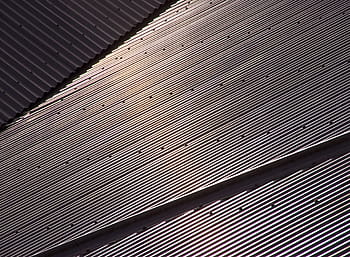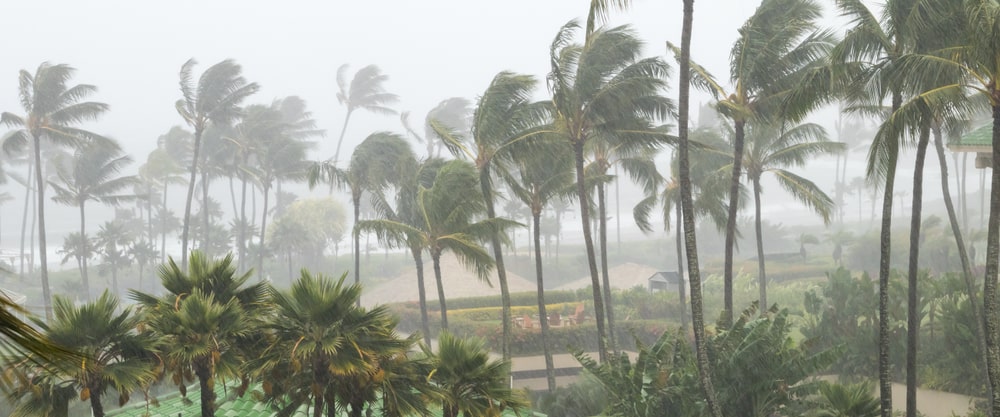Protecting your home in strong winds and hurricanes is important if you want to make sure that you don’t overdo it with your insurance and you have somewhere to live after the storm has passed. One of the best ways that you can protect your home from strong winds is to install a metal roof. Given that they have been proven to withstand up to 140 miles per hour gusts of wind, they can hold up against even the heaviest of rain and snow and hail storms. If you are living in an area that is prone to heavy wind and hurricanes, then having a metal roof installed is the best protector that you can invest in. That demand is rising because we’re seeing that hailstorms, embers from wildfires and hurricane winds are simply becoming more frequent. The evidence is also showing that metal roofs are among the best protection out there.
There are other roofing materials, but they really don’t hold up so well. Slate shingles have a Class A rating, but they don’t withstand wind and fire in the same way that metal roofs can. Asphalt deteriorates from the moment it’s installed, which means that you’re having to pay for reroofing every 10 years or more. Given that storms are increasing in their frequency and severity, the growing demand for durable roofing solutions has also increased.
Metal roofs are a popular choice because they are durable and able to withstand weather conditions, no matter how harsh. Unlike the traditional roofing materials, metal roofs are engineered to offer long lasting protection and this makes them particularly appealing when it’s in a hurricane prone area.
Why Traditional Roofing Materials Fall Short
Asphalt shingles and slate tiles are traditional roofing materials, but they fall short when it comes to withstand severe weather. Slate shingles have a Class A fire rating, but they don’t have the same level of wind resistance that a metal roof can offer.
Asphalt deteriorates immediately, as we said, which means that you’re going to have to frequently repair it and completely re roof every 10 years. Metal roofs can provide that longer lasting solution and they require minimal maintenance. On top of that, you get superior protection against the elements.
Metal roofs are effective in high wind conditions because they have exceptional resistance to uplift forces. During a heavy storm, the combination of water and wind can create significant pressure on a roof. In some cases, it can lift it off the structure if it’s not properly secured. Metal roofs are designed to combat this because of their design, installation and material properties.

Design: Tailored to Resist Wind and Water
There are two primary systems available for metal roofs, hydrostatic and hydrokinetic. Each system is designed to address the challenges that are posed by different roof slopes.
Hydrostatic system
Feel for those low sloping roofs. A hydrostatic system is designed to resist water infiltration by using the pressure created by the water itself. Water cannot penetrate the roof with this system, even in the most severe weather conditions.
Hydrokinetic system
This is better suited for the steeper sloping roofs and is designed to facilitate efficient water shedding. A hydrokinetic system allows water to flow properly off the roof, reducing the risk of water pooling and potential damage.
Installation: Precision and Expertise Matter
Metal roofs are more effective in high wind conditions, but this is heavily dependent on the quality of its installation. Without proper installation a metal roof is not going to withstand those uplift forces we mentioned earlier and it’s not going to remain securely attached to the structure of the property.
The roofing industry places a strong emphasis on following installation guidelines to the letter. A professional roofing installer is trained to ensure that every component of a metal roof is securely fastened. From the flashing and fasteners to the underlay, this meticulous attention to detail can prevent the wind from getting under the roof and causing it to lift.
If you are living in a region prone to hurricanes, this level of precision is essential so that you can ensure the long term durability of the roof.
Material Properties: The Strength of Steel
There are many materials that are used in metal roofing, but steel stands out as the best choice, especially if you are in a hurricane prone area. Steel is impressively strong and it has an impressive strength to weight ratio. This makes it the exceptional resilient choice under the pressure of high wind and flying debris.
Steel does not degrade over time, even when it’s exposed to the harshest elements, which adds an extra layer of protection. Steel roofing can be coated with zinc or aluminum, which enhances its durability. This also provides a protective barrier against corrosion and rust, and this coating ensures that the roof remains intact and functional even after years of exposure. Corrosion resistance and strength makes metal roofing, especially steel, an ideal choice.
Additional Benefits of Metal Roofing
Metal roofs are highly effective in protecting homes during hurricanes and strong winds, but their benefits do go beyond storm resistance. High wind and hurricanes are important to consider if you’re living in areas that are prone to these, but here are some other reasons that metal roofing is a worthwhile investment.
Fire resistance
You know that metal roofs are noncombustible. This means that during a fire they will not ignite or contribute to the spread of one. If you’re in an area that is prone to wildfire, embers can be carried by the wind and ignite traditional roofing materials. You won’t have to worry about that with the metal roof.
Energy efficiency
Known for their energy efficiency, metal roofs reflect a significant portion of the sun’s rays rather than absorbing them. This is a reflective quality that you need if you want to keep your home cooler in the summer. You’ll reduce your need for air conditioning, and you’ll lower your energy bills. You can go one step further by coating your metal roof for the special finish that enhances its reflectivity and further improves energy efficiency.
Low maintenance
Metal roofs can last for years, while traditional roofing materials may need to be replaced every 15 to 20. You’ll find that your metal roof will withstand the elements for at least 50 years or more with minimal maintenance. Due to its low maintenance, it becomes easier on your pocket and it’s the most cost effective option in the long run.
Environmental sustainability
If you’re looking for an environmentally friendly option, metal roofing is the answer because it’s often made from recycled materials that can be fully recycled again at the end of its life.
Metal Roofs in Different Regions
Metal roofs don’t just benefit those in hurricane and high wind areas. They’re brilliant for all climates and here’s why:
Cold climates
If you live somewhere that deals with heavy snowfall, you’ll find that your metal roof allows snow to slide right off and that prevents a build up of ice dams. Those ice dams usually cause water to build up and the strength of the metal ensures that the roof bears the weight of heavy snow without integrity and durability being compromised.
Hot climates
In a hot region, metal roofs can offer those reflective properties that keeps the home cooler and reduces heat absorption. This is super beneficial in areas where energy costs for cooling can go – literally – through the roof.
Coastal areas
Do you have the luxury of living in a coastal area with a sea view? A metal roof offers protection from the saltwater in the air, and it comes with a protective coating that offers resistance to rust and corrosion, which are two things that are common by the sea.
Choosing the Right Metal Roof for Your Home
If you’re considering investing in a metal roof for your home, you need to factor in certain considerations to make this the right decision for your home. Those considerations are:
Material
Steel is a common material for metal roofs given its strength and durability. Aluminum, zinc and copper are also available and they all have their own benefits. Aluminum is great as it is lightweight and resistant to corrosion. Copper and zinc give you that aesthetic you’re looking for.
Finish
With the right finish, you can ensure that your metal roof has an enhanced performance. Galvanized steel is highly resistant to corrosion and rust, especially when it’s been coated with an additional layer of zinc. You can also get a painted finish that offers more protection and you can choose from a range of colors to suit your home.
Style
Metal roofs come in a range of styles, too, including corrugated paneling, metal shingles and standing seam. What style will you choose? Well, that depends on your desired aesthetic.
A Wise Investment for Long-Term Protection
Those who live in areas where severe storms are frequent will benefit from metal roofing, but they’ll also be the best option no matter where you are. The resistance to the weather, water, and wind, as well as fire, is enough of a reason to get a metal roof installed onto your home.

